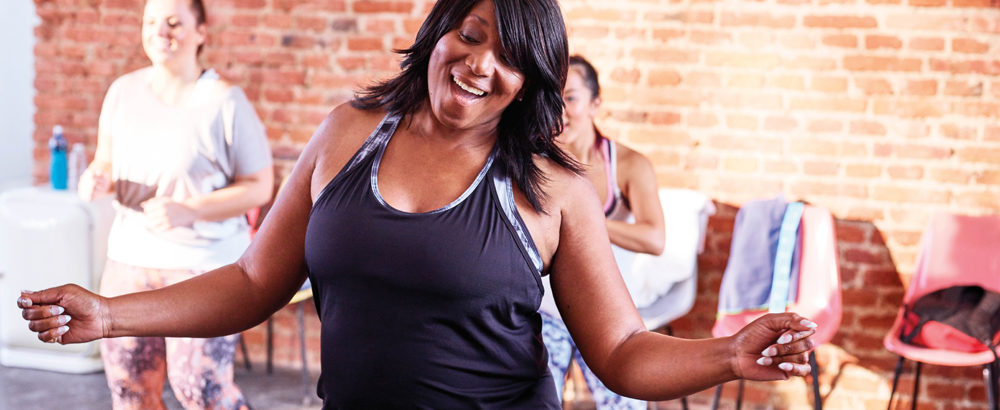How to Sneak 150 Minutes of Exercise into Your Week
By Christie Youssef, DO
While this may seem harmless, sedentary behavior can lead to everything from general aches and pains to cardiovascular disease and chronic conditions like type 2 diabetes. Even the World Health Organization is concerned: It reports that physical inactivity is the fourth leading risk factor for death globally, causing 3.2 million deaths worldwide.
To combat increased risks, the AHA recommends getting 150 minutes of moderate exercise each week, such as brisk walking, swimming, or mowing the lawn (anything that gets your heart rate up). If that sounds like a lot, think about it as 30 minutes of moderate exercise five times per week. If you truly can’t fit that much exercise into your week, keep in mind quality over quantity – it’s OK to spend less time exercising if you’re doing higher-intensity workouts. If you’re short on time, you can shoot for 75 minutes of vigorous exercise, like running, per week. Just try not to save it all for the weekend every time so you don’t end up with an overuse injury.
But are those weekend workouts enough to combat the effects of sitting for hours each week? There’s no definitive evidence to say for sure. What is clear, though, is that the more exercise you get, the less you’ll feel the impacts of sitting all day. Make “sit less, move more” your mantra. Here are a few ways to sneak some extra movement into your days, whether you are at work or at home. And remember, it’s important to consult your physician before beginning any exercise regimen.
At Work
First, consider your posture while sitting at a desk. Make sure to sit up straight in your chair, shoulders relaxed, arms close to your sides, and feet on the floor. You can also add support for your lower back. If you want to swap out your traditional desk chair for something else, consider an exercise ball or a backless stool, which will keep your core muscles active.
If your employer is on board, try a standing desk. These can be costly, but you can rig your own by simply stacking a few books to elevate your computer. At the very least, get up from your desk every half hour or so and walk a bit.
Throughout the day, you can swap the elevator for stairs, park farther from the front door, and go for a lunchtime walk. Try to get your coworkers involved, which can help keep you accountable and in the habit. Consider scheduling walking meetings if your workplace is amenable.
There are also some things you can do during your commute. If you take public transportation, offer your seat to others and stand for the ride. Should you live close enough to your workplace, think about biking or walking to work when the weather is nice.
At Home
For many, unwinding after a long day at work involves watching TV. Try incorporating some movement into your tube time by walking during commercials instead of fast-forwarding. Simply walking at a slow pace will burn more calories than sitting. If you can do more vigorous exercises, like jumping jacks or running in place, that’s even better! You can also practice yoga poses, like the Cat-Cow (a common sequence that warms the body and brings flexibility to the spine) to improve back extension.
If you’re catching up with friends and family on the phone, consider the “walk and talk” approach instead of the “sit and speak” tactic. Phone chats offer a great opportunity to take a stroll around the neighborhood, or do a few laps around your living room or up and down the stairs.
If you’re worried about getting enough exercise, consider enlisting a friend as a workout buddy to keep you (both) accountable. Investing in an activity tracker might help you translate your time on the move into something concrete that resonates more than minutes on a clock.
Feeling motivated to develop healthy habits? Check out MAPMG’s advice to help you stay active, start a regular exercise routine, or set up healthy workplace ergonomic strategies. Remember, with a little creativity it’s possible to sneak in more movement throughout your day.
This was republished from the MAPMG On Health blog.




